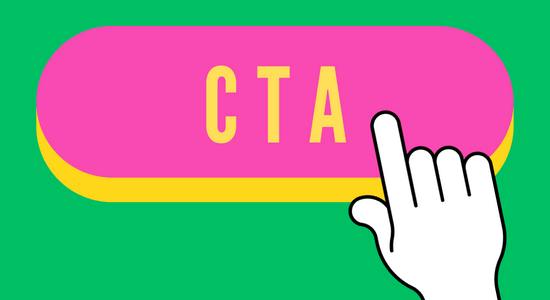If you're not making money with your website despite the steady increase in the number of visitors, you need to investigate the negative factors. Google Analytics can confirm "what" (i.e. the facts such as popular pages, and bounce rates), but not "why". So here's something you should know - reasons why people would leave your website without buying.
There may be one reason that applies to your site or maybe a combination of two or more reasons.

Did You Know?
- Only about 22% of businesses are satisfied with their conversion rates, indicating a significant opportunity for optimization.
- E-commerce websites have an average conversion rate of 2-3%.
- Websites with a loading time of 2 seconds have an average bounce rate of 9%, which can impact monetization negatively.
- Ad blocking costs publishers over $22 billion annually.
- 64% of users are more likely to buy a product online after watching a video.
Weak Call-To-Action
Lack of strong call-to-action (urging your visitor to take immediate action = "buy now!") is a major factor that you're not making money. A typical bad example would be a mere discreet sentence with a hyperlink, such as "Click here to make a purchase" at the end of a blog post. A text link can be so easily missed, and it's even worse if;
- The sentence with a link is not at the end of the article but halfway through the article. You don't conclude with your promotion, which means you're not asking your readers to even consider a purchase before they leave.
- The phrase is not a request to buy; for example "Click here to take a look" instead of "make a purchase".

The call to action should be big, bold, and clear. Adding a button to your webpage makes a big difference. Using a free Call-To-Action Button Generator is a good idea.
Thrive Architect has an awesome CTA feature such as the image shown here.
Did You Know?
- Email marketing has an ROI of $42 for every $1 spent.
- Only 0.5% of data on the internet is analyzed and used, affecting personalized marketing strategies.
- Mobile devices account for approximately 50% of web traffic globally but often yield lower conversion rates compared to desktop.
- Influencer marketing is expected to grow to a $13.8 billion industry, indicating its potential for website monetization.
- Affiliate marketing accounts for 15% of all digital media revenue.
Wrong Headline
The headline (page title) is the entrance to your blog post. That's what people find by organic search. Headline decides what kind of audience to invite, therefore it's important to choose the right keywords to find potential buyers.
For example, you're selling leather jackets;
- A headline "Keep Your Leather Jackets Last Long" and a relevant article may be informative, but that would only be likely to find people who want to know how to take care of their jackets, not those who wish to buy a new jacket.
- But you may be able to promote leather polish within that page instead.
- A headline "Long Lasting Leather Jackets" may invite people who are prepared to buy good-quality jackets.

This means every time you decide on the headline of your page post, (a) your intention should always be clear - whether you're trying to sell or giving advice to your readers, and (b) If you're giving advice but promoting some products in the same page, make sure there's a connection in between the headline, article and the products.
Too Many “Exits”
It is so tempting to appeal that there's so much you can offer. Social share buttons, affiliate banners in your sidebar if you have any, a footer menu, and even your top menu. However, every link is an "exit" - whether internal or external - ushering visitors out of the page.
On top of all the "exits" that you may already have in your site, by placing more links in the blog post, you're only giving your visitors more opportunities to leave.
I'm referring to "by-the-way links" as a bad example here. Throughout your article, alongside the "Buy Now" button link, you carry on "By the way, if you're looking for XYZ, click here. We also have ABC, click here. If you want to know more about DEF, click here..." These are all distractors and alternative exits.
One of the "golden rules" of an online sales letter is to have only one exit, i.e. "Buy Now" button. And it should be placed several times on the page if it's lengthy. No sidebar, no menu bar. But a blog like yours and mine is not a sales letter, we're not hard-selling. In niche marketing, we're giving information and advice to our readers, hoping they'll appreciate and make a purchase in the end. So I'm not saying you should only have one exit (link), I'm saying the number of links in your article should be minimized.
Did You Know?
- Over 70% of small businesses use social media to promote their websites, yet not all effectively monetize this traffic.
- The global e-commerce sales are projected to hit $4.9 trillion by 2021, highlighting the monetization potential for online businesses.
- 65% of content marketers say generating traffic and leads is their biggest challenge.
- The top 3% of most-viewed blog posts attract almost as many visitors as the bottom 97% combined.
- Subscription models are on the rise, with the global subscription e-commerce market expected to reach $478.2 billion by 2025.
Legal Issues
Running a website means you've got to play by the rules. Legal issues can sneak up on you if you're not careful. Whether it's copyright infringement or not following privacy laws, getting into legal hot water is hugely damaging. It's not just about fines; it's your reputation on the line. Consider this:
- Copyright Infringement: Accidentally using someone else's content without permission is a big no-no.
- Privacy Concerns: People care about their privacy. Not handling user data properly can lead to trust issues.
- Not Having a Terms of Service or Privacy Policy: These documents are not just formalities; they're necessary to protect you and your visitors.
- Ignoring Accessibility Standards: Everyone deserves to use your website, including people with disabilities. It's not just good practice; in many places, it's the law.
No Images

You'd better place some images in your blog post for two obvious reasons;
- It makes the content harder for your visitors to digest otherwise.
- Images placed in above-the-fold (top half of your webpage) will indicate what the page is about instantly, telling your visitor whether they're in the right place or not.
A blog post with no image display is visually bland. People tend to scroll down quickly until they see an image, and if there isn't any, there's a greater chance for them to leave your page without reading, let alone making any purchase.
Did You Know?
- Display advertising, while popular, only has an average click-through rate (CTR) of 0.05% across all formats and platforms.
- 90% of searchers haven’t made their mind up about a brand before starting their search, which impacts how websites can monetize through brand influence.
- Websites with a strong keyword strategy and SEO optimization see 50% more traffic than those without.
- User-generated content on websites increases conversion rates by 29%.
- 40% of online shoppers report that video increases the likelihood that they'll purchase a product on mobile.
Too Many Products For Sale
A product comparison page is great in helping visitors to make a decision to purchase. What you need is to display several products but not too many, with a clear indication of advantage and disadvantage of each product. Typical example would be something like "Design 7/10, Usability 9/10, Features 8/10... Overall rating 8/10" with detailed explanations.
Your visitors may get confused or bored if they see too many products in one page. But how many is too many? It really depends how the products are laid out and the similarity between the products. But they should be laid out in clear order with relevant images attached.
The last thing your visitors want to hear is "By the way, there's another product here...and here...and some more"!
Wrong Ads, Too Many Ads
You only start reading an interesting article and this giant ad pops up in your face. Your annoyance level is maximum when you can't find the [X] to close, or when you've accidentally clicked the ad to open a new window. You immediately close it and uncover the article that you were reading. Not just irritated by it but knowing the fact that the whole advertisement's been wasted... The moment you accidentally clicked and closed, the advertiser would have paid a few cents ppc (pay-per-click) to the agent for nothing.

People hate popups that don't offer any value. Such as the ones that repeat the same offer in the same popup, or the ones that generate a new popup each time the user clicks "no thanks".
With all that said, popup ads are proven to work - if they didn't work people wouldn't use them. Clickmagick suggests that many of their users have been able to increase average EPCs (earnings-per-click) by up to 42% using their popup feature.
So the rules are;
- Placing clickable advertisements (popups, banners) is a tremendously good idea to redirect your visitors to a product page.
- But if they're not clicked, obviously they're not effective. Change the ads (e.g. design, size) or their position, or get rid of them completely.
- Even worse if they're scaring your visitors away (i.e. they leave the page). Means the ads are only annoying them, not good enough to interest them.
- Too many ads across your blog post will equally annoy your visitors.
HeatMap Tracker (L-R) By clicks - By eye/mouse movement - By scrolling
Heatmap Tracker is a great tool to monitor your visitors' movements, enables you to check at what point your visitors tend to leave your site, e.g. as soon as an ad pops up.
Slow Loading Site
"40% of people abandon a website that takes more than 3 seconds to load."
I'm not sure where that statistic originated, but if you Google search by the exact sentence, you'll find that it's mentioned in many sites. So keep in mind that visitors will not tolerate a few seconds of blank screen, unless your blog post has a reasonably enticing headline.
Check your website loading speed using several tools listed here, and try the methods to improve >>> How To Speed Up WordPress Site Loading
Showing Desperation
When a website seems too eager to make a sale, it can feel a bit desperate, don't you think? It's like being at a store and the salesperson won't leave you alone. Here's how desperation might show:
- Over-the-Top Promises: Claiming your product will change someone's life overnight is a bit much.
- Too Many Pop-Ups: One after another, pop-ups can feel like someone constantly tapping your shoulder.
- Begging for Emails: Asking for an email address every few seconds gets old fast.
- Aggressive Sales Tactics: Pressure selling doesn't make friends. It scares people away.
Offering Too Good to Be True Products
We've all heard if something sounds too good to be true, it probably is. This is hugely relevant for websites selling products. Offering miracles can make people skeptical. Here's why:
- Trust Issues: When a product claims to solve all problems at an unbelievably low price, it raises eyebrows. People start to wonder what the catch is.
- Quality Concerns: If you promise the moon for a penny, people might assume the quality is lacking.
- Customer Disappointment: Even if people buy it, when the product doesn't live up to the hype, they'll be disappointed. And probably won't come back.
- Damages Your Reputation: Word gets around. If your product is a letdown, so is your site's reputation.
Outdated Site Design
An outdated site design is like showing up to a modern party in a disco outfit from the 70s. Sure, it's fun for a theme night, but it might not give the best impression for everyday wear. Websites are similar. The internet evolves rapidly, and designs that were in vogue a few years ago can quickly look out of place. Here's why keeping your site's design fresh and up-to-date matters:
- First Impressions Matter: When someone lands on your website, you have just a few seconds to make a positive impression. An outdated design can make visitors think your content or business practices are also behind the times.
- Usability Issues: Older designs often aren't optimized for the current web, which means they might not work well on all devices or browsers. This can frustrate visitors who can't easily find what they're looking for or navigate your site.
- Reflects on Your Brand: Your website is a reflection of your brand. An old-fashioned design can suggest that your business is not keeping up with industry trends or consumer needs.
- Impact on Trust: Modern web users are savvy. They trust websites that look professional and current. An outdated design can raise doubts about your credibility and the quality of your products.
Broken / Outdated Link

WordPress Broken Link Checker plugin - free to download
As a user, you get pretty disheartened when you're all prepared to buy but discover the purchase link is broken. As a marketer it's even more damning when you discover you've missed out on sales opportunities because the link's been broken for a while. So maintain your links periodically! It would be hard to check every single link in your website page by page, but there's a free plugin available for WordPress such as Broken Link Checker.
Forget To Place A Link (!)
Sounds obvious and silly, right? But believe it or not, this is a conversation I had in the past with two of my fellow affiliate marketers.
Affiliate A: I was wondering why I wasn't making a cent, and realised I had forgotten to add an affiliate link in many of my blog posts.
Affiliate B: Yes, it's important to always remember to place a link.
Ray: What do you mean you've forgotten?
Affiliate A: I mean exactly what I just said...
Ray: But as an affiliate, your ultimate purpose of building a website is to monetise it...?
Affiliate B: I tend to get carried away with the content I'm writing. As soon as I finish, that's enough and I publish it forgetting to include a link.
Don't forget to place a clear call-to-action!
Making Money With Your Website
If you feel you're not making enough money with your website, I hope you'll make some improvements by avoiding the 12 points listed above. Feel free to leave comments or questions below.
How I "Finally" Make Over $7,000 Monthly Income
"The most valuable thing I've ever done!"

I agree with all the 12 points. Too many ads are annoying. Forgetting affiliate links…stupid but people do. When content is too long I simply won’t read it. No images, boring… Mobile not friendly, not acceptable! Great article, thanks. Shaun
Hi Shaun, thanks for your comment. I appreciate your input! Forgetting to place affiliate links, I guess some bloggers get carried away with the content they’re writing and publish it without the link…perhaps. You are right, I never read blog articles that are too long & dragging. That’s why it helps when there’s a summary at the top.
Hi Raymundo cheers for good advice. I do not have a website now but I want to make one and make money. I find too many mistakes that I do not want to make I will remember about link. I know how to put a link but advertisements I do not know how to put on my website, I must study too and can you teach me if I do not understand. Thank you Ashley
Hi Ashley, thanks for your comment. Yes of course I can show you how to place ads on your webpage, but that’s only a part of a site building and niche marketing process, so you’ll learn it due course (and it’s not difficult) – for any advice please don’t hesitate to contact me at info@cybercashworldwide.com.
Great article giving us 12 reasons you are not making money with your website!
Some of your tips are a really pretty easy to fix such as a call to action and having a great headline, but things like loading speed for your site is a problem that I encounter with my website. I was wondering if you know of a plugin or something you can do to help speed up your site?
I also had to laugh about not placing an affiliate link in the article, I have seen posts where I want to purchase what is recommended but I couldn’t find a link anywhere, Lol 😉
Great post, very helpful 🙂
Hi John, thanks for your comment. Yes forgetting to place a link is pretty silly, but I was once in a situation where I couldn’t place a link. I wrote about this particular service, then a few months later the service provider I had an affiliate agreement with stopped trading. But the type of service was so unique that I couldn’t find alternative providers anywhere. I deleted all the links but had to mention in the post that I was looking for a new provider, just to be clear – I didn’t want my readers to think I had forgotten to place a link!
Slow loading website speed is affected by various issues, so I don’t think there is a plugin to magically speed it up, but there are plugins to fix the issues, such as clearing cache and optimising images, just as explained in PJ’s infographic (How To Speed Up WordPress Site Loading). Thanks John for stopping by.
I didn’t get the last one. Are you saying some people genuinely forget to sell?
Hi Martin, how’re you doing? Yes they seem to “genuinely forget to sell” – not every blogger is a seller and some people even hate to sound like they’re selling, try to avoid “sell-y expressions”. Even though these two people are affiliate marketers, they’re so passionate about the niche that they could write so much about technical aspects (how to treat the products, when to use them, what not to do etc etc) non stop. All they want is to help their readers, which is a good thing. They would recommend whatever they recommend – without a link to Amazon. It may sound a little too silly for most of us, so #12 is just a little extra!
Thanks for an interesting read – even though I was aware of a couple of these bits of advice, there were more that I weren’t and had never thought about before.
I particularly liked tip number 3 about ‘Too Many Exits’. I’d certainly never thought of that but it makes perfect sense – I shall be adjusting my website accordingly!
Thanks!
Louise
Hi Louise, thanks for your comment. I actually need to be careful myself too, as I tend to place too many external links. Particularly where there’s a jargon involved, instead of explaining what it means I hyperlink the jargon to Wikipedia. That’s not a bad thing, it’s a good thing, but when there are too many, I should step back and see if they’re taking my readers out of the page… Thanks again for stopping by.